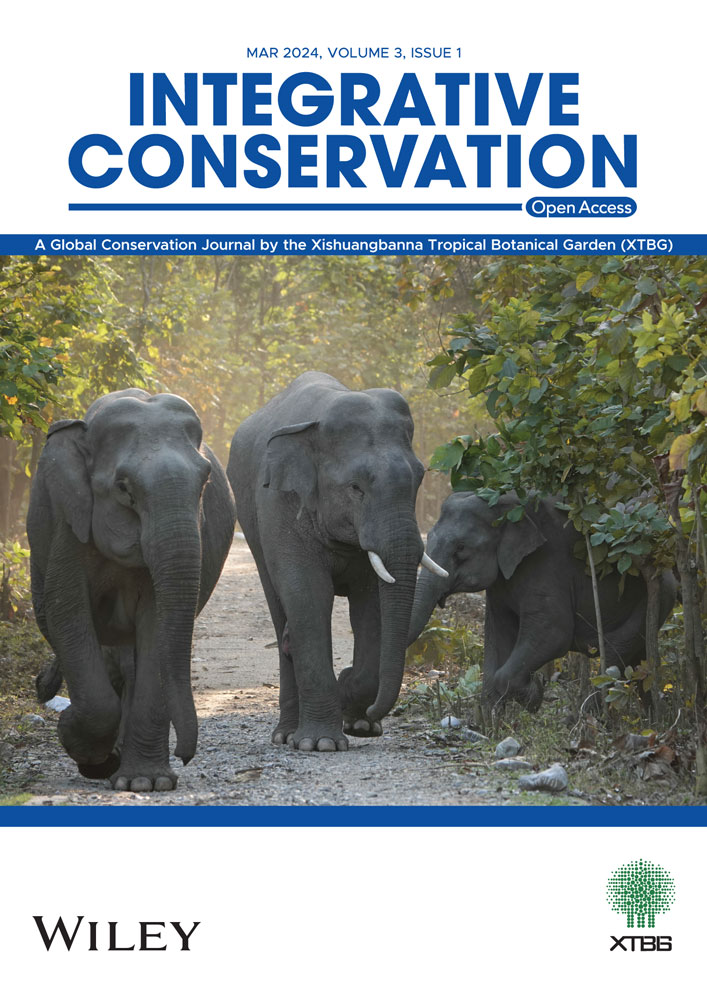Endangered beach mouse resistance to a Category 5 hurricane is mediated by elevation and dune habitat
濒危海滩鼠类五级飓风的抵抗力受海拔和沙丘栖息地的调节
Editor-in-Chief: Ahimsa Campos-Arceiz
Handling Editor: Harald Schneider
Abstract
enCoastal ecosystems and their endemic taxa are under threat from hurricanes that are increasingly frequent and severe due to climate change—leading to a need to better understand factors associated with species' resistance (capacity to withstand) and resilience (capacity to rebound) to these storms. The beach mouse species complex (Peromyscus polionotus spp.) is a representative endangered group of rodents tightly associated with such coastal habitats. We examined track-tube monitoring data of beach mice from Tyndall Air Force Base, Florida, USA, before and after the 2018 strike of Hurricane Michael, a Category 5 hurricane, and again before and after the 2020 strike of Hurricane Sally, a Category 2 hurricane. We applied dynamic occupancy models to track-tube survey data to assess environmental factors associated with beach mouse initial occupancy and local extinction following Hurricane Michael. Beach mice exhibited high probabilities of detection and initial occupancy across most sites and all representative habitats before Hurricane Michael. Dynamic models revealed that local extinction probabilities of beach mice decreased with increasing elevation and dune habitat, followed by grassland, and scrub—highlighting high elevation dune as the primary driver of beach mouse resistance to storms. Extinction probability was not related to other factors like plant species percent cover or proximity to storm strike. Beach mice occurred at 100% of track-tubes before and after Hurricane Sally. Beach mice are adapted to persist in dynamic coastal environments with regular hurricane strikes, as evidenced by their resistance and resilience following Hurricane Michael to reach 100% occupancy with high resistance to the weaker Hurricane Sally. However, as hurricanes become stronger and more frequent with global change, isolated populations of beach mice may be more susceptible to local extinction with the corresponding loss of elevation and dunes. High elevation, particularly in dune habitats, is an important mediator of resistance and resilience to hurricane impacts and should be considered in habitat restoration and reintroduction strategies, especially if relative elevation decreases with sea-level rise.
摘要
zh由于气候变化,沿海生态系统及其特有类群正受到越来越频繁和严重的飓风的威胁,因此我们需要更好地了解与物种对这些风暴的抵抗力(承受能力)和恢复力(反弹能力)相关的因素。海滩鼠类复合体(Peromyscus polionotus spp.)是与此类沿海栖息地紧密相关的代表性濒危啮齿动物类群。我们分析了美国佛罗里达州廷德尔空军基地2018年五级飓风“迈克尔“袭击前后和2020年二级飓风“莎莉“袭击前后海滩鼠类的地下通道监测数据。使用了动态占域模型分析地下通道监测数据,以评估与飓风“迈克尔“之后海滩鼠类初始占域率和局部灭绝相关的环境因素。在飓风“迈克尔“袭击之前,海滩鼠类在大多数位点和所有代表性栖息地都表现出高的探测率和初始占域率。动态模型显示,海滩鼠类的局域灭绝率随海拔和沙丘生境的增加而降低,其次是草地和灌丛,强调了高海拔沙丘是海滩鼠类抵抗风暴的主要驱动力。灭绝率与植物覆盖率或距离风暴袭击位置的距离等其它因素无关。海滩鼠类在飓风“萨莉“袭击前后的100%地下通道中均有出现。海滩鼠类已适应于在有规律的飓风袭击的动态沿海环境中生存,这表现在它们在飓风“迈克尔“之后的抵抗力和恢复力,即达到100%的占有率,并且对较弱的飓风“萨莉“具有很高的抵抗力。然而,随着全球变化导致飓风的强度和频率越来越高,相应的高海拔和沙丘栖息地丧失使孤立的海滩鼠种群可能更容易局域灭绝。高海拔,特别是在沙丘栖息地中,是抵抗和恢复飓风影响的重要介质,应该在栖息地恢复和重引入策略中加以考虑,特别是在相对海拔随着海平面上升而降低时。【审阅:贺如川】
Plain language summary
enThreatened and endangered species that occur in coastal areas are susceptible to the impacts of hurricanes that can destroy and reorganize their habitats. We showed that endangered beach mice can survive these impacts by using high elevation dune habitats to stay safe. However, as hurricanes become more frequent and stronger with future climate change projections, the threat may become too strong for hurricane-adapted species and ecosystems.
通俗语言摘要
zh生活在沿海地区的受威胁和濒危物种容易受到飓风的影响,其栖息地会被飓风破坏和重组。研究结果显示,濒危的海滩鼠类可以通过利用高海拔沙丘生境来安全地生存,从而抵御这些影响。然而,随着未来气候变化,飓风变得更加频繁和强烈,对适应飓风的物种和生态系统的威胁可能变得过强。
Practitioner points
en
-
Standardized long-term monitoring of endangered species can provide serendipitous opportunities to learn and better understand how species are impacted by extreme weather events by providing baseline data.
-
Coastal wildlife and ecosystems are dependent on high elevation dune habitats to avoid the impacts of extreme weather events, so restoration and reintroductions should prioritize these recovery objectives.
实践者要点
zh
-
对濒危物种的标准化长期监测可提供偶然的机会,通过提供基线数据来学习和更好地了解物种如何受到极端天气事件的影响。
-
沿海野生动物和生态系统依赖高海拔沙丘栖息地来避免极端天气事件的影响,因此,恢复和重新引入应优先考虑这些恢复目标。
CONFLICT OF INTEREST STATEMENT
The authors declare no conflicts of interest.
Open Research
DATA AVAILABILITY STATEMENT
The data that support the findings of this study are available from the corresponding author upon reasonable request.




